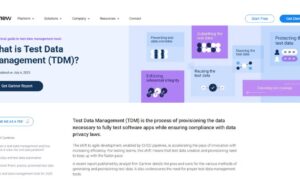In the rapidly evolving landscape of data analytics, traditional data architectures are being outpaced by new innovations designed to handle the growing complexity and scale of modern data. Sai Kaushik Ponnekanti’s exploration into the shift from data warehouses to lakehouses offers a deep dive into these transformative changes. By blending the flexibility of data lakes with the performance of data warehouses, the lakehouse architecture is poised to redefine how organizations manage, store, and analyze vast volumes of data.
A Paradigm Shift: From Data Warehouses to Data Lakehouses
Data warehouses were once the backbone of business analytics, providing structured environments for storing and querying data. However, as data volumes skyrocketed and diversified into unstructured formats, the limitations of these systems became apparent. Organizations needed a solution that could scale flexibly and accommodate diverse data types. Enter the data lake—an innovative architecture designed to manage raw, unprocessed data at scale.
But the data lake, while revolutionary in its ability to store vast amounts of data, introduced new challenges, particularly around governance and query performance. This is where the concept of the data lakehouse comes into play. By converging the strengths of both data lakes and data warehouses, the lakehouse architecture combines the flexibility of data lakes with the governance, performance, and structure typically associated with traditional data warehouses.
What Makes the Lakehouse Unique?
The lakehouse architecture addresses the critical pain points that plagued both data warehouses and lakes. One of its most defining features is the use of open table formats like Apache Iceberg, Delta Lake, and Apache Hudi, which provide ACID (Atomicity, Consistency, Isolation, Durability) properties on top of cloud storage. These formats enable organizations to maintain transactional consistency and governance while preserving the scalability and flexibility that data lakes offer.
Redefining Cost and Performance
One of the most compelling benefits of the lakehouse architecture is its ability to reduce the total cost of ownership compared to traditional data warehouses. With data storage costs significantly lower in cloud environments, organizations can retain and analyze exponentially more data without facing prohibitive expenses. A key advantage of the lakehouse is its decoupled storage and compute model, allowing each component to scale independently based on demand. This flexibility significantly reduces wasted resources and operational costs, which were a common issue in traditional systems where compute and storage were tightly coupled.
Simplifying Data Governance and Security
While the flexibility of data lakes made them attractive for managing unstructured data, they lacked the governance features necessary for enterprises, especially in regulated industries like healthcare and finance. Data lakehouses tackle this challenge head-on by implementing comprehensive governance frameworks. These architectures integrate fine-grained access controls, encryption, and audit logging to ensure that data is protected while remaining accessible for analytical purposes. The robust metadata management and enhanced security features offered by lakehouses provide organizations with the necessary tools to enforce data privacy regulations and maintain data integrity across diverse data sources.
The Road Ahead: Continuous Innovation in Data Architecture
As businesses continue to generate vast amounts of data, the need for scalable, cost-effective, and flexible data architectures will only grow. The data lakehouse offers a promising solution, allowing organizations to manage and analyze data more effectively while maintaining high standards of performance, governance, and security. This shift toward lakehouses marks not just an evolution in data storage but a fundamental change in how organizations leverage data for business insights.The data lakehouse paradigm represents a significant advancement in the way enterprises handle their data. By combining the best aspects of traditional data warehouses and data lakes, it offers a unified, flexible platform that can meet the challenges of modern data analytics. As data continues to grow and evolve, the lakehouse architecture will likely become the go-to solution for organizations
In conclusion,Sai Kaushik Ponnekanti is a technical expert with extensive experience in cloud technologies and data management. His insights into the evolution of data architectures have been instrumental in understanding the future of enterprise data management.As organizations continue to embrace lakehouses, they will unlock new possibilities for analyzing large datasets, driving efficiencies, and making more informed business decisions.



































